Constantin Somov Biography

Constantin Andreevich Somov was born in St. Petersburg on November 30, 1869 into the family of the senior curator at the Hermitage, artist and art historian,
Andrei Ivanovich Somov and his wife, Nadezhda Constantinovna, an excellent musician. The family had a big collection of paintings, etchings, watercolors, big library; the artists were frequent guests in the house. Constantin started to learn to play piano, singing, and painting early. From 1888 till 1897, he studied at the Academy of Arts, where from 1894 he took a course at Ilya Repin’s studio. Later he wrote that the first five years in the Academy were a lost and fruitless time. Nevertheless he took the studies very seriously and got a number of awards in the academy. The work with Repin can be felt in some of his paintings of those years, e.g. portraits of N. Ober, wife of the sculptor Ober (1896), Portrait of Father (1897), Self-Portrait (1898).
Since his childhood Somov was a friend of Alexander Benois; during their students’ years they often gathered together in the house of Benois, there Somov got acquainted with Sergei Dyagilev, future theatre interprener, and Lev Bakst.
In 1896, the new subjects appeared in his works: ladies and gentlemen in the 18th century garments, e.g. Rest after a Walk, Lady by the Pool, Promenade after Rain, etc. Such works, full of intimite poetry, elegant and refined, were far from the ideals of realistic art. The “gallant” 18th century was admired in Benois’ circle. Somov more than others was fond of French Rococo - Watteau, Fragonard, light chamber music by Rameau and Grétry, Gluck and Mozart. The artist preferred to work with watercolors, but sometimes used mixed techniques – combined watercolor with goache, whitewash and bronze. Somov’s works of 1896-97 are not those of a student, he found already his own theme and his individual style.
In autumn of 1897 he left Academy and went to Paris, where his friends, Benois, Lanceray, Bakst, Ober, Ostroumova had already left for. In Paris they frequented various private studios and the Académie Colarossi. In 1898 after return to St. Petersburg, the friends founded World of Art (Mir Iskusstva) society, with their own magazine. Sergei Diaghilev made much for founding of the society. The World of Art exhibitions attracted talented young artists of St. Petersburg and Moscow. The society played very important role in development of Russian art of the beginning of the 20th century.
In 1897-1900, Somov worked on a beautiful portrait of his childhood friend, and a peer in the Academy of Arts, the artist Elisabeth Martynova. She was often sick and he left abroad several times, and the work on the portrait took so long time. The portrait became known as “Lady in Blue”. Martynova’s colleague-painters remembered her as highly emotional, proud and easily wounded. She was sure that one day she would be a great artist. Unfortunately, she got ill with tuberculosis and died early.
In 1901 Somov painted another woman-artist, Anna Ostroumova (1901). “My portrait has likeness with me and has not. The features are mine, and even the pose is mine. But at the same time there is a lot of from Somov, some characteristics do not belong to me. This dreaming melancholic figure… I, though sometimes was sad of course, on the whole was energetic, businesslike and liked to laugh too much…”
Portraits and landscapes form the most realistic part of Somov’s work; his individual style reveals in original subject paintings, love scenes in interior and in the open air, retrospective views, such as Echo du temps passé, Enchantment, The Laughed Kiss, In the Bosquet, etc.
Since 1910, Somov more and more often turns to the subject of Arlequine, e.g. Lady and Harlequin (1912), Italian Comedy (1914), etc., traditional masks of commedia dell’arte. In 1906-10 the artists created a series of graphic portraits of Russian artists and poets for magazines and books: Alexander Blok (1907), Eugene Lanceray (1907), poet M.A. Kuzmin (1909), ballet-dancer N. Pozdnyakov (1910).
In 1900-1910, Somov’s works shown at exhibitions of “World of Art” society, Union of Russian painters, Munich and Berlin Sessecions, autumn Salon of 1906 in Paris and others became widely known in Europe. The artist was especially popular in Germany, where, in 1907, the first monograph about him was published by Oscar Bic. (Constantin Somov. by Oscar Bic. Berlin. 1907).
In 1913 Somov became an Academician, and in 1918 a professor of the Art College.
At the end of 1923 Somov immigrated to the USA. He stayed in the USA for 1 year. “…my art is absolutely alien to America,” he wrote in one of his letters. In summer of 1925, he moved to France, where, near Paris, the last 14 years of his work would pass. In this period he painted mainly portraits. Unfortunately, we can show you only one of his late works, the Portrait of Rahmaninov.
Constantin Somov died in Paris in 1939.
Bibliography
Constantin Somov by irina Pruzhan. Moscow, 1972.
‘The World of Art’ Movement. by Vsevolod Petrov and Alexander Kamensky. Aurora Art Publishers. Leningrad. 1991.
- Portrait Of A.I. Somov, The Artist's Father.
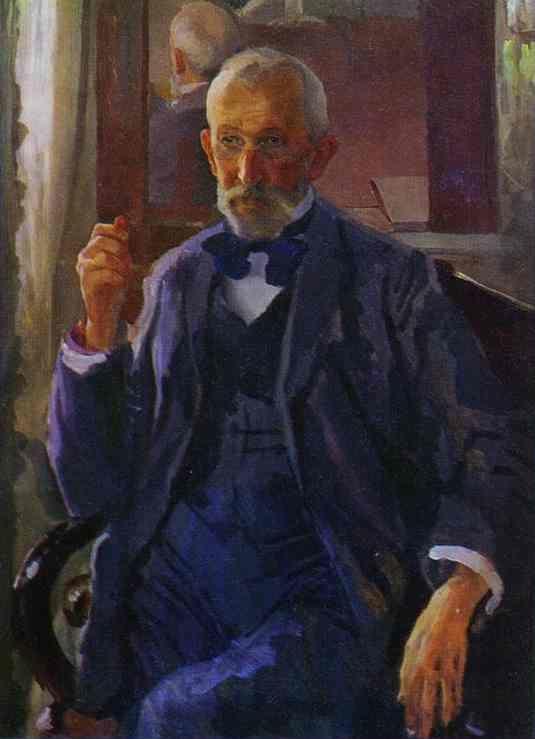
1897. Oil on canvas. The Russian Museum, St. Petersburg, Russia. Read Note.
- Portrait Of N.F. Ober.
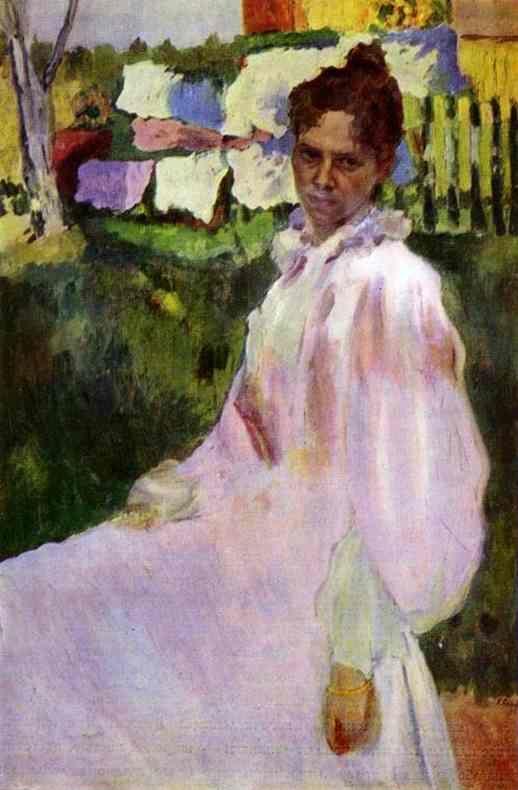
1896. Oil on canvas. The Tretyakov Gallery, Moscow, Russia.
- Self-Portrait.
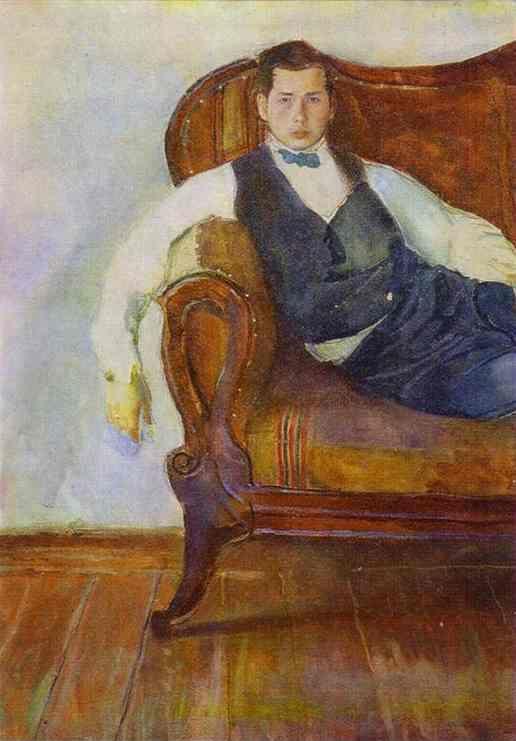
1898. Watercolor, pastel, pencil on paper. The Russian Museum, St. Petersburg, Russia.
- In The Forrest.
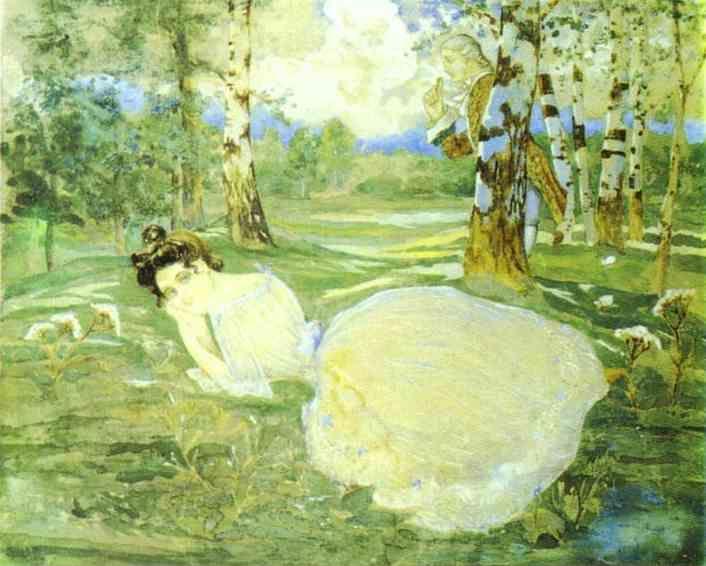
. Mixed media on paper mounted on cardboard. The Picture Gallery of Armenia, Erevan, Armenia.
- Rest After A Walk.
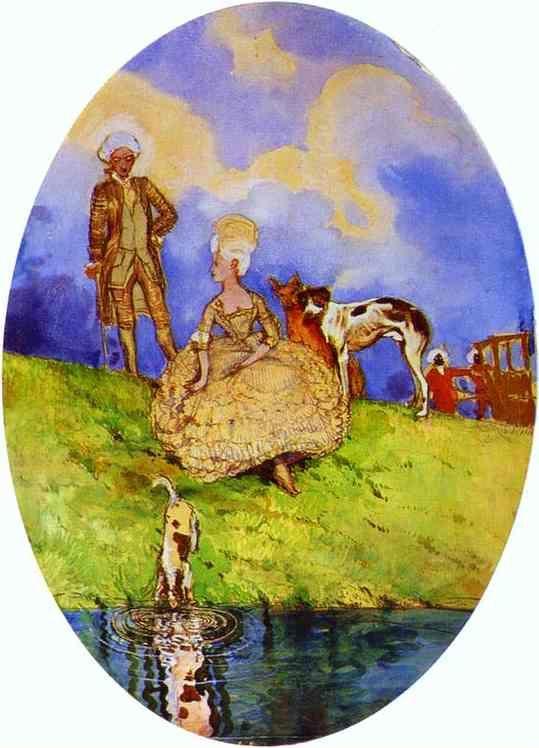
1896. Watercolor on paper pasted on cardboard. The Russian Museum, St. Petersburg, Russia.
- Lady By The Pool.
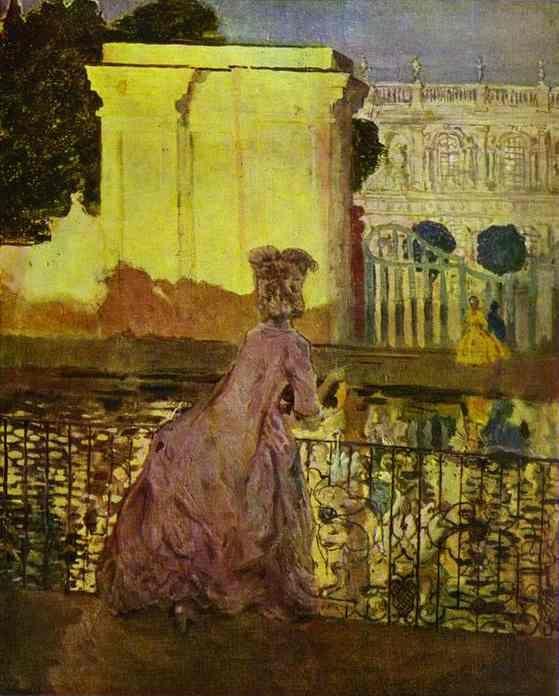
1896. Oil on canvas. The Tretyakov Gallery, Moscow, Russia.